 ARENZVILLE, IL | HOME OF THE WORLD'S BEST BURGOO
ARENZVILLE, IL | HOME OF THE WORLD'S BEST BURGOO | Stirring the Soup |
|
In past decades, the soup was stirred by hand, requiring dozens of volunteers. Then a couple of farmers (Herb and Ed Tegeder) figured out a better way... There are no formal plans or drawings for these inventions, but clever mechanics (i.e., most farmers) can probably craft a similar apparatus by looking through these photos and reading the descriptions.... that is, IF they can find the parts. 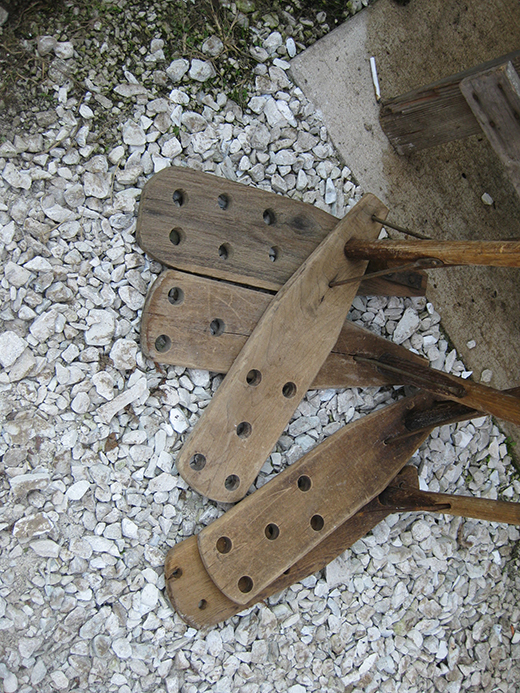 Wooden paddles (usually used when making apple butter) were used to stir the soup for many years. 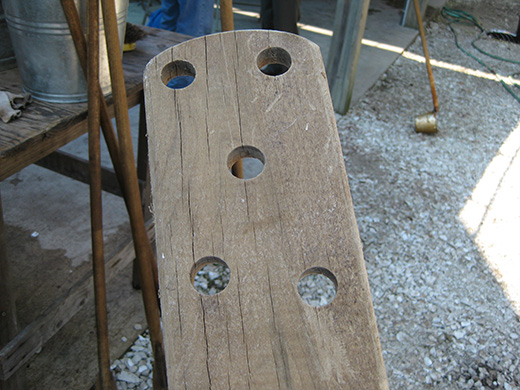 These paddles are still kept available to stir soup at Arenzville because there is still a need to keep the soup stirred when the electric stirring mechanisms have been removed from the kettles. For example, if one of the stirrers malfunctions or if they are removed so that big ladles can be used to dip the soup out into smaller containers for serving, then the wooden paddles may be needed. The kettles are still very hot at this point, and if the soup is not stirred, it will scorch. 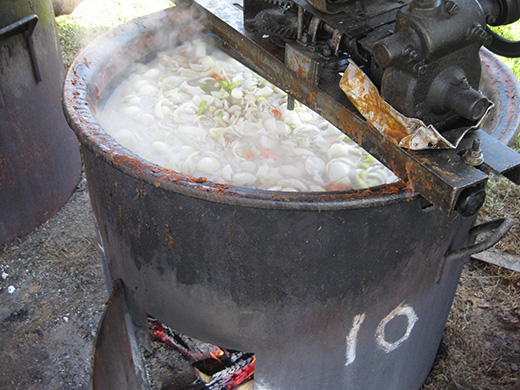 Arenzville burgoo starts with all fresh ingredients in an iron kettle over a roaring fire, so there is a need to keep the contents of the kettle moving to avoid scorching the soup. In this photo, you can see an electric stirrer, originally created by the Tegeder brothers (Herb and Ed), from an old washing machine motor and other mechanical parts. This particular stirrer apparently has a problem with some leaking oil, thus, the aluminum pan around the base of the motor to keep any unwanted contents from going into the soup.  The stirrer is mounted across the top of the kettle on an iron beam that is secured to the kettle. Each stirrer is separately powered by electricity. If necessary, the cooks can disconnect the power and remove the apparatus. 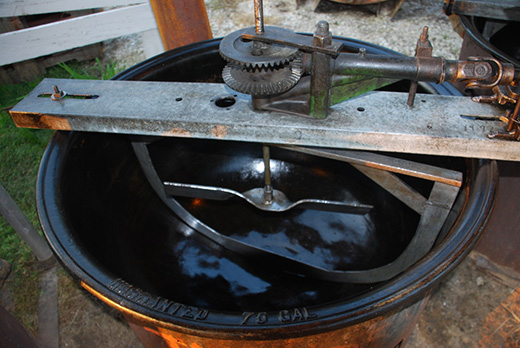 A stirring mechanism on the kettle, assembled and ready for use. Tony Thomas notes that his father recalled that there were a few experimental models before a successful design was achieved. The inventors got only one chance a year to test their ideas! 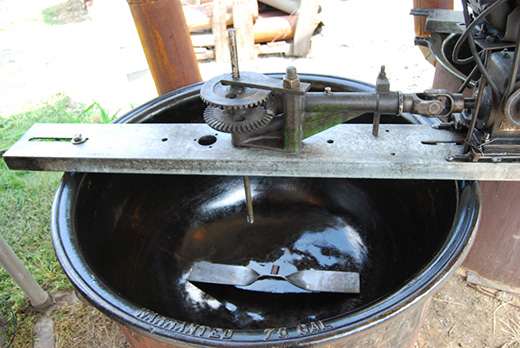 The shaft from the gears protrudes down through the iron beam and into the kettle, where custom-made interlocking paddles are attached. Dale Winkelman said the Tegeder brothers salvaged parts from a John Deere 227 cornpicker for the gear mechanism. 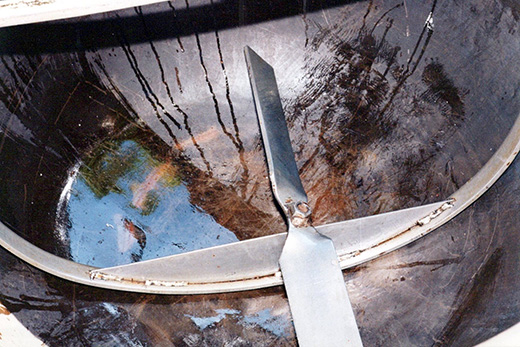 An example of a set of the paddles for one kettle. The inventors experimented with different types of stirring paddles. One important criterion is that one part of the paddle must freely rotate close to the bottom of the kettle to keep ingredients from sticking. 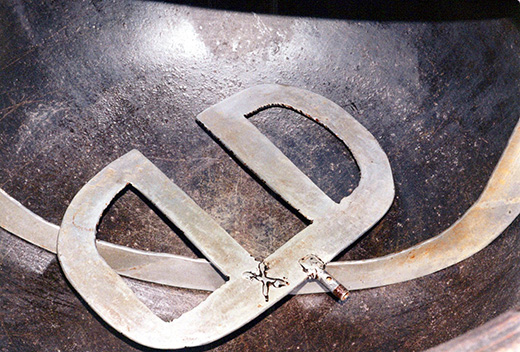 Another example of a stirring paddle for use in an iron kettle to make burgoo.  A fully assembled stirrer in an empty kettle. 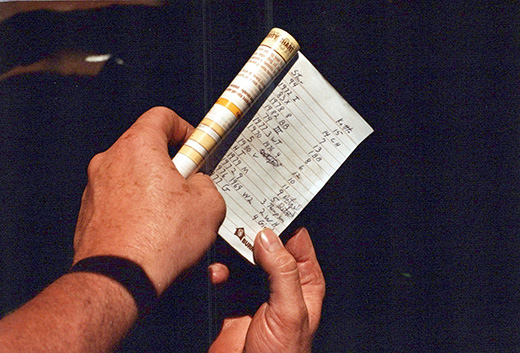 Because each kettle has a distinctive curvature and depth, it is not possible to interchange a stirrer made for one kettle to use in a different kettle. The Arenzville cooks have a VITALLY IMPORTANT code book that notes the marking system used to make sure each stirrer gets in the correct kettle.  Each time the stirrers are used, they are first checked for operational fitness and cleaned. 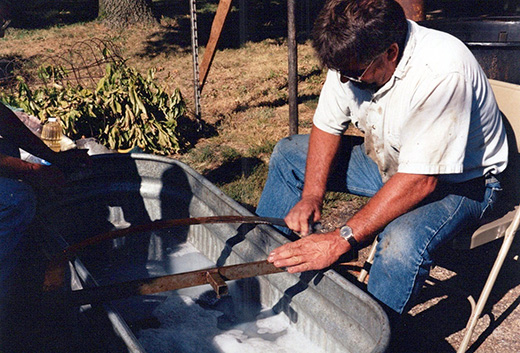 Between cooking kettles of soup, the cooks must also make sure that all parts of the stirrers are thoroughly cleaned. 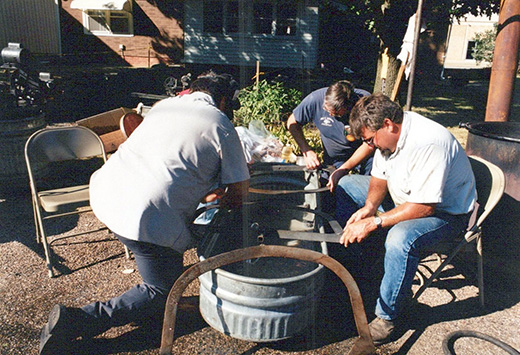 An entire committee is assigned to maintaining and cleaning the stirrers each year. It is hot, grimy work. These guys are volunteers.  The stirring mechanisms must be capable of enduring high heat conditions because they are mounted over boiling kettles for 14 to 20 hours at a time.  In this photo, you can see how the iron beams are mounted across the top of the kettle and secured. The iron kettles are fitted with a "jacket" that supports the kettle and has a firebox below. Arenzville soup is cooked over wood-fired kettles. Some other places use aluminum kettles and propane. Other communities have also devised electric stirring mechanisms. For example, at the parish picnic of St. Mary of the Woods, Whitesville, KY, their stirring mechanisms are all connected to an overhead drive system which powers all the stirrers at the same time. |